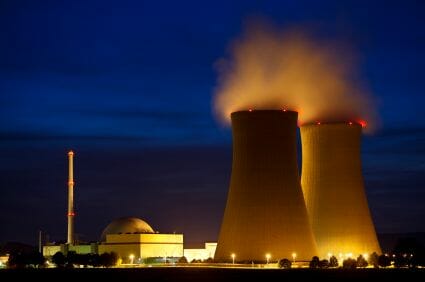
Nuclear casks are heavily lead shielded containers used to store and or ship radioactive materials.
Such as spent nuclear fuel or other high-level radioactive waste. Casks are often made from lead, concrete, and steel. Casks must meet regulatory requirements and are not intended for long-term disposal in a repository.
Spent nuclear fuel shipping casks are used to transport spent nuclear fuel used in nuclear power plants and research reactors to disposal sites. Each shipping container is designed to maintain its integrity under normal transportation conditions and during hypothetical accident conditions. Casks are designed and tested to withstand crashes, fire, water immersion and puncture. To be certified, a cask design must withstand a sequence of four tests that measure its performance in specified crash and fire accident conditions.
Lead storage and lead containers are a critical aspect of nuclear containment and radiation shielding. Dry cask storage is a method of storing high-level radioactive waste, such as spent nuclear fuel that has already been cooled in the spent fuel pool for at least one year, more often 3 to 5 years. The fuel is surrounded by inert gas inside a large container. These casks are typically steel enclosed lead cylinders that are either welded or bolted closed, the cylinder provides leak-tight containment of the spent fuel, and also provide radiation shielding to workers and members of the public.
The Manufacture of Nuclear Casks
Clearly, a high standard of manufacturing is required for such an important storage vessel that contains potentially deadly waste.
Lead is used throughout the nuclear industry as a radiation shielding material as it has a high atomic weight and blocks radiation very effectively. However, as lead sheet is also quite malleable, lead alone is not mechanically rugged enough to be used for nuclear casks on its own. This is why nuclear casks consist of lead containers inside steel and concrete shells.
Several key manufacturing steps are involved in the manufacture of nuclear casks.
The rest of this article describes those processes:
In manufacturing the metal shell that will surround the lead cask, precision CNC machining is required. Typically, stainless steel is machined to specifications up to 000050″, using CAD-CAM auto assist software.
Also, the mold used for the lead alloy pour will typically be precision manufactured using precision machining CNC machines, saws, mills and lathes.
Lead alloy pours
Most of the lead cask is cast as a single pour of molten lead into the machined mold. Lead casting, is a common method of creating contiguous complex shapes. In this case the process ensures a continuous vessel with no seams that could allow radiation to leak out.
Lead machining
Only the lid of the nuclear cask is a separate piece, a screw thread is machined into the lid of the lead cask and into the vessel itself allowing for a radiation tight seal.
Due to its soft texture, lead is an excellent material for custom machining. Lead also allows the machining of castings to be performed at higher speeds because it acts as a lubricant for cutting tool edges; the result is improved machined surface finishes.
In Alloys lead does not have an adverse effect on strength unless present in high concentrations, but it does reduce ductility.
Typically lead is machined using CNC machines. CNC stands for computer numerical controller that reads computer generated instructions that are extracted from electronic drawings. This allows complex 3 dimensional shapes to be created within accurate and repeatable precision. Thus allowing for the custom fabricate every type of lead product from single parts to long production runs for both industrial and medical applications.
Lead welding
Very few manufacturers have the skills required to successfully weld lead. Lead is a very soft metal and can easily deform under its own weight unless supported by a stronger metal such as steel.
Lead is always welded with a gas flame, either the oxy-acetylene flame or another oxy-fuel gas flame. The lead welding operation is sometimes, erroneously, referred to as” lead burning” though no actual combustion is involved.
Painting or Plating
The lead cask can be finished by painting or plating as required.
Conclusion
The manufacture of nuclear casks for the storage and transportation of nuclear waste involves a range of manufacturing capabilities. Clearly, the safety of industry workers and potentially members of the public is at stake, therefore it is imperative that the radiation casks be free of defects.
Very few manufacturing companies have all of the capabilities required to produce this type of component. Nuclead Inc is one such company. Nuclead has the equipment, knowledge and experience to build radiation containers correctly.